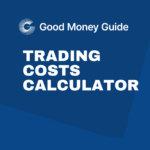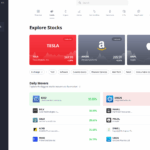Yes, it is possible to make money with an online trading platform. However, it is also possible to lose money.
If you want to be a profitable CFD trader then you need to follow some golden rules of CFD trading. It’s not difficult to make profitable trades, but what is difficult is ensuring that you make more profits on your winning trades than you make losses on your losing trades.
It’s a well-known fact that even the best traders in the world only get it right half the time. It’s how they manage their CFD positions that sets them apart and makes them better traders.
We have a full guide on how to trade CFDs here but the basic rules for CFD trading are:
- Don’t trade with more than you can afford to lose
- Run your profitable trades
- Cut your losing trades quickly
- Use stop losses to minimise risk
- Combine technical and fundamental analysis before trading
- Don’t trade with more than you can afford to lose
You should not risk money by trading CFDs that you need for something else. CFD trading is high risk and there is a high probability that inexperienced traders will lose money quickly. CFD trading can successfully form part of your overall investment portfolio. Around 10% is a suitable percentage to assign to high-risk investments.
It’s important to budget and balance your portfolio to include a range of diversified low, medium and high-risk investments, with a larger portion being allocated to medium and low-risk, long-term investment products such as tax-efficient SIPPs and stocks and shares ISAs.
If you only have a small amount of money to invest and choose to trade it all through CFDs, there is a large chance that your entire risk capital will be eroded as you learn to trade CFDs.
Here are four key ways to improve your CFD trading
- Run your profitable trades: Managing a position is one of the most challenging aspects of trading CFDs. CFD traders are often too keen to take small profits, rather than keep a winning position alive. Using trailing stop losses on your online CFD trading platform can be effective in running profitable positions as the market moves in your favour. If you buy as the market is going up (or go short as the market is going down), it is more profitable to keep the position open and ride the trend as far as you can.
- Cut your losing trades quickly: Another key mistake that CFD traders make is to let losses increase without closing a position in the hope that the market will turn around. When trading, it is good practice to have a loss limit in place so that your profitable trades are not wiped out by a large loss. If you have a losing position, consider closing it and re-evaluating the market and trying again when the market is looking more predictable.
- Use stop losses to minimise risk: Using a stop loss means having a level in the market where your position is automatically closed to minimise loss. Stop losses are triggered automatically, even when you are not in front of your trading platform. The benefit of using stop losses is that you limit your downside risk (loss) on a position automatically and protect your account balance. Some CFD brokers offer guaranteed stop losses, which trigger even if the market crashes, and guarantee to give you your stop price, regardless of slippage.
- Combine technical and fundamental analysis before trading: The two most common forms of generating trading ideas are fundamental and technical analysis. Fundamental analysis means looking at the financial health of a business or economy. Technical analysis means looking at charting patterns of markets to see what has happened in the past and what is likely to happen in the future. The benefits of technical analysis are that it is somewhat self-fulfilling in that in the most liquid CFD markets, traders are looking for similar patterns and will trade when they occur, potentially moving the market. It is more popular in short-term trading. Fundamental analysis can be used to trade around economic indicators if you disagree with the consensus before the data is announced. Fundamental analysis is more popular for longer-term investing. For more information, read our guide on the difference between technical and fundamental analysis.

Richard is the founder of the Good Money Guide (formerly Good Broker Guide), one of the original investment comparison sites established in 2015. With a career spanning two decades as a broker, he brings extensive expertise and knowledge to the financial landscape.
Having worked as a broker at Investors Intelligence and a multi-asset derivatives broker at MF Global (Man Financial), Richard has acquired substantial experience in the industry. His career began as a private client stockbroker at Walker Crips and Phillip Securities (now King and Shaxson), following internships on the NYMEX oil trading floor in New York and London IPE in 2001 and 2000.
Richard’s contributions and expertise have been recognized by respected publications such as The Sunday Times, BusinessInsider, Yahoo Finance, BusinessNews.org.uk, Master Investor, Wealth Briefing, iNews, and The FT, among many others.
Under Richard’s leadership, the Good Money Guide has evolved into a valuable destination for comprehensive information and expert guidance, specialising in trading, investment, and currency exchange. His commitment to delivering high-quality insights has solidified the Good Money Guide’s standing as a well-respected resource for both customers and industry colleagues.
To contact Richard, please ask a question in our financial discussion forum.




